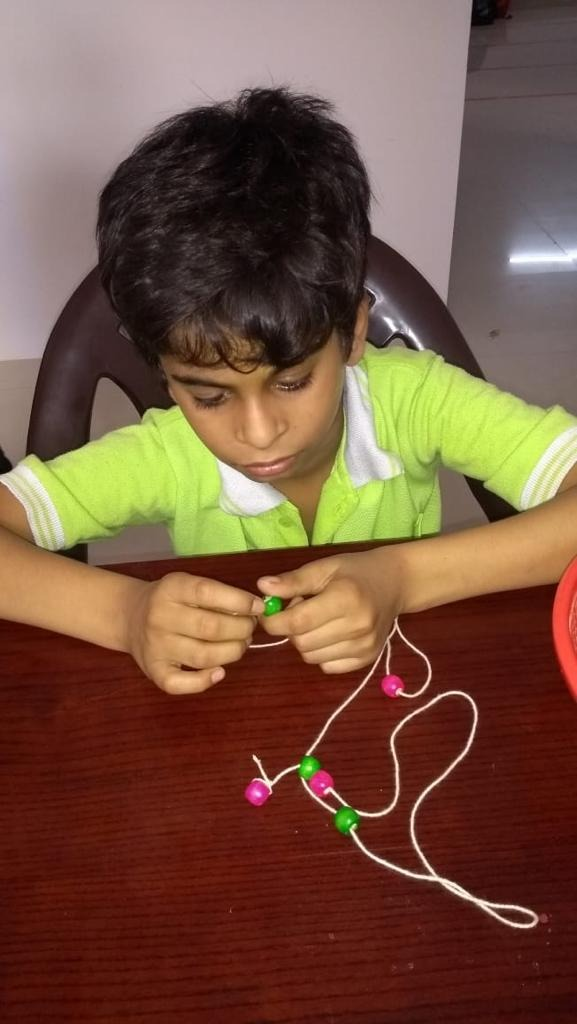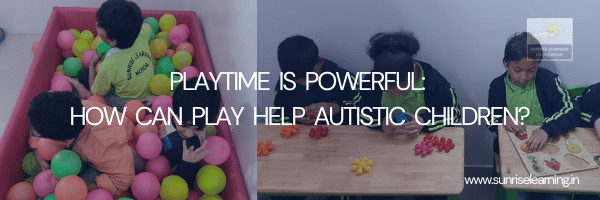DR SHRUTI SINGH, Early Intervention Consultant & Pharmacologist (AIIMS)
Blog compiled by MS ANVI MAHAJAN
In the previous blog, we learnt about the importance of play, its different stages and types. Let’s understand how we can plan and structure play so that we enjoy, bond and achieve targets with our children on the autism spectrum!
Ø OBSERVE
Observe what they do in their free time, what objects they play with, what their likes and dislikes are and what reinforcements they respond to. Take note of these factors and proceed further keeping in mind their likes, patterns and preferences.
Ø DETERMINE BASELINES
Once you know his preferred toys and activities, observe what stage of play your child is at. Try and understand any difficulties they may face like sensory or anxiety issues. Now evaluate which targets may be achieved in the current scheme of things.
Ø PLAN
Plan out the types of play and toys (based on your observations) and the desired targets that can be achieved in the process.
Ø ENGAGE
Join them in any activity or game they are playing and see if they accept you in their space. Try and mirror and imitate your child to make him/her feel comfortable and at ease. Comment positively and make remarks using big words and animated facial expressions (“Wow! You played the piano so well!” “That is a wonderful yellow car, my car is red”)
Watch out for any response or signal from your child’s side as they may not use language. Eg: gestures, body language, expressions or signs.
Be mindful of the child’s comfortable level of physical proximity which can vary from day to day. Interpret your child’s sensory needs and avoid invading or threatening their physical space.
3 E’s
Maintain energy, excitement and enthusiasm. Invest yourself completely such that your involvement becomes more interesting and comforting than the toys or games. This can help tremendously in making a strong connection and bond with your child with ASD.
Ø MOVING FROM UNSTRUCTURED TO STRUCTURED PLAY
Structured play is when an adult provides additional resources, starts play and/or joins the child during play-time, to offer some direction or guidelines.
For this, we must keep a few things in mind. These are our ABC (assess, bond and challenge) and reinforcement.
- Remember the ABC- Assess, Bond, Challenge- Assess your child’s current stage and level of play. Always prioritize developing a connection and bond with your child and once they show that they are comfortable with a particular stage, challenge them gradually and progressively.
- Reinforce every little and big achievement and success. Verbally applaud them or use tangible reinforcement, anything works!
Ø HOW TO STRUCTURE PLAYTIME?
§ The first step is choosing an appropriate play activity. Activities that have a clear goal and endpoint are best. These include jigsaws, puzzle books, song and action DVDs, picture lotto and matching games.
§ Next, you could try creating visual support: Represent each step of the activity with visual cues attached to a board. The cues could be objects, pictures or words. Pull off each cue during the activity as your child progresses, so that your child can clearly see the next stage of the activity. Gradually reduce your support until your child can use the visual support and complete the activity on their own.
§ To start with, your child might not find the activity or its end result fun by itself. You might need to model and shape.
You might need to demonstrate the use of a new toy through visual/physical prompting.
Use short instructive phrases. Try and use repetitive phrases and be consistent. (“Put in the ball”, “See the ball go”)
Ø HOW TO BUILD SKILLS THROUGH PLAY?
• Eye contact: Try giving them toys from their eye level. Play games like peek-a-boo!
• Joint attention- Encourage your child to touch you and come up with an appealing response. Eg: If your child touches your nose, make a loud funny sound/ expression. Try dancing together, following simple steps which they can follow!
• Turn-taking- If you are building a block tower together, then take turns placing each block. Repeatedly use phrases like “my turn” and follow by placing a block or passing the ball etc.
• Language and communication- Remember to label new toys and talk about what you are doing. You can model new words and create opportunities for your child to use language.
• Expand your vocabulary through parallel talk or self-talk.
- Remember the ABC and reinforce every step!

Ø Some examples to help you:
- Pretend play: Break pretend play activities into steps. Encourage role-play by getting your child to act out a favourite story. Softly redirect the child towards pretend play. Give your child a chance to copy the new pretend action. For example, if he has a toy kitchen set, you can help him learn to pretend to make soup for his bear before feeding it to him. Model the action by pretending to stir some soup in a pot for your stuffed rabbit, making sure to comment and remark- “Look, I’m making soup for Mr Rabbit to eat” (as you stir the soup with a toy spoon). “He’s very hungry!”
- Structure instruction-following: Once this has been practised in unstructured play, try games like ‘Simon says’ or ‘Follow the leader’ to help them learn how to follow instructions.
- Cooperative play: Pair your child with a partner he/she is comfortable with. Let your child perform that activity with the partner (doing a puzzle, legos etc.) and ask the partner to provide reinforcement. Identify the right activities (which are familiar to them and are not too difficult). You can progress to schedule play dates to do these activities with another person.

Ø Some tips!
- Use your child’s interests. For example, if your child loves Thomas the Tank Engine, start by using Thomas- d jigsaws, puzzles or colouring books.
- Choose activities that your child can do. Think about which stage of play your child is at and try progressing onto the next stage. For example, if your child is banging blocks, introduce turn-taking with the blocks to create a block tower together.
- Use your child’s strengths. For example, if your child responds well to visual cues, try a very visually stimulating activity like sorting coloured blocks.
- Talk only as much as you need to. Do not ask too many questions, instead, give more statements and remarks.
- Keep the play-time short.
- Redirect inappropriate play. For example, if your child is banging blocks together, you could prompt your child to stack them or redirect your child to a different activity that involves banging.
- Avoid excessive use of over-stimulating toys like light and sound toys.
- Do not go by age labels on toys, consider your child’s interest levels.
- Be alert and aware of any obsession or rigidity that might be forming with a toy and try to redirect them and break away the fixation gently.
- Go slowly and gradually, baby steps!
- Interact with them but be aware of your child’s innate sensory difficulties. Take a break if your child is overwhelmed. Start afresh later if possible. Allow them to stim and calm down.
- Remember, your biggest goal and achievement is bonding and connecting with your child. Play is powerful!
- Never forget Assess, Bond, Challenge and Reinforce!
Additional reading:
WELCOME TO AUTISM LAND: Read the blog Welcome To Autism-Land (sunriselearning.in)
MANAGING MELTDOWNS: Read the blog MANAGING MELTDOWNS IN CHILDREN WITH AUTISM (sunriselearning.in)
[mc4wp_form id=”4687″]

